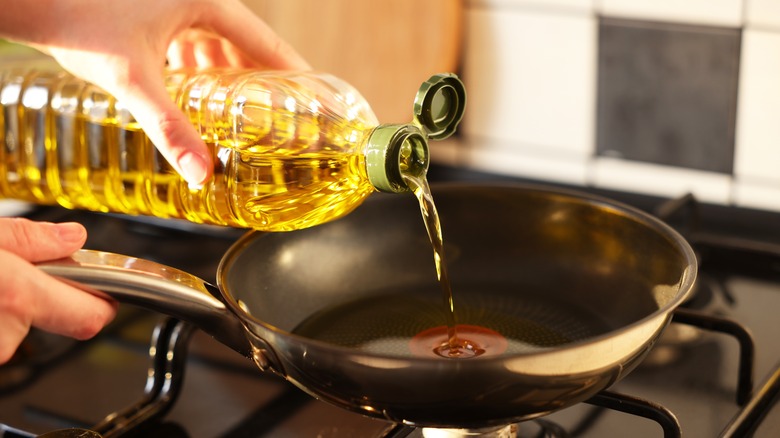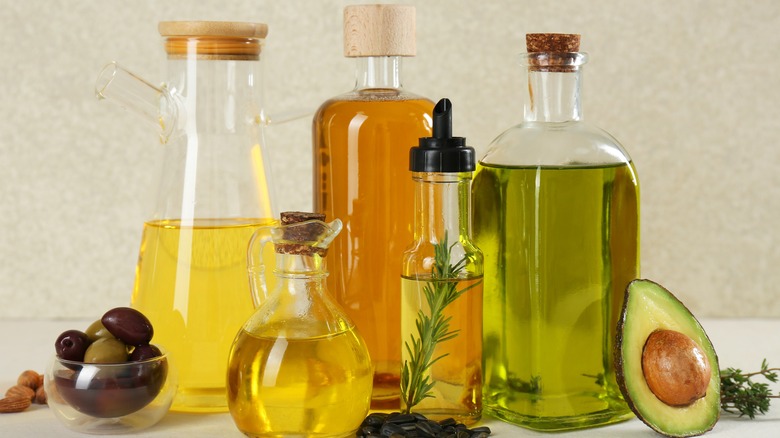What Is Smoke Point And Why Is It A Big Deal?
Choosing the right cooking oil can make all the difference in how your dish turns out, especially when it comes to heat. One key factor to consider is the oil's smoke point, the temperature at which it begins to smoke and break down. When oil starts to smoke, it can ruin the flavor of your food by giving it a bitter or burnt taste — in addition to setting off your smoke alarms. While many recipes specify the right oil for the job, understanding smoke points allows you to confidently swap oils or choose alternatives when needed.
High-heat cooking requires oils that can handle the temperature without breaking down. For lower-temperature cooking, oils are more interchangeable, and you can focus on flavor. But once you start cooking at higher temps — around 400 degrees Fahrenheit or so — you become a bit more limited in which oils will work well. Opting for high smoke point oils becomes essential for techniques like impressively searing steak, deep-frying, and sauteing, where stability under high heat ensures the best results. These oils are also better choices when it comes to preventing your air fryer from smoking up the room.
High, medium, and low smoke point oils
Oils with low smoke points, such as butter and extra virgin olive oil, are best suited for low-heat cooking and most baking applications. These can be used up to 350 degrees Fahrenheit in most cases. Some unrefined oils like sesame and coconut also fall into this category. These oils are known for their robust flavors but aren't ideal for cooking at high temperatures. Flaxseed oil has the lowest smoke point of all, making it unsuitable for cooking. Low smoke point oils are more commonly used for finishing dishes or in raw preparations, like salad dressing.
For medium-heat cooking, versatile oils like refined coconut oil, vegetable oil, and lard are solid choices. These typically handle temps up to 425 degrees and work well for tasks like sauteing, pan-frying, and baking. They can handle moderate heat without breaking down, making them ideal for everyday cooking where you need a bit more flexibility but don't need the high-heat tolerance of neutral oils.
High smoke point oils are necessary for high-heat applications like frying, stir-fries, and searing. They manage temperatures up to around 450 degrees, with some going up to 500 degrees or more. These include many neutral oils, such as canola, grapeseed, and refined peanut oil. Ghee, which lacks the water content of regular butter, is also a good option for high-heat cooking. Oils like safflower and refined avocado oil have some of the highest smoke points, perfect for when you need serious heat in the kitchen.

